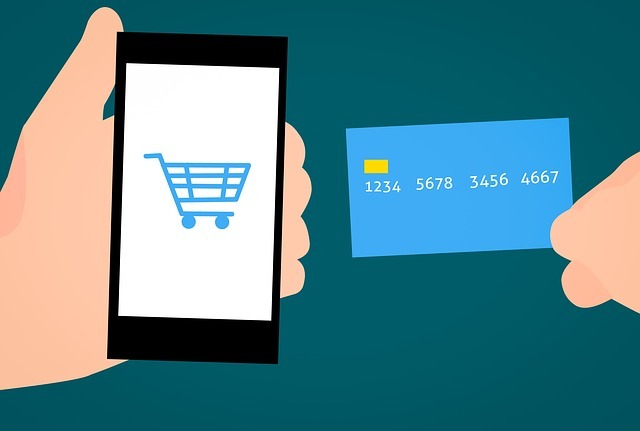 Emily Moore
Emily Moore
Author
Easily set up an online store and embrace tools to boost your performance. Here are the e-commerce strategies you should apply to convert online browsers into your customers.
Boost your business revenue following simple steps.

How to convert online browsers into customers. Source: pexels.com
Building an e-commerce platform is easy as there are themes you can download with everything you need to list products. However, landing your first customers may not be as easy because you need to understand how the market works and embrace the tools that will improve the visibility of your e-commerce business on the market.
Thanks to technology development, you don’t need to do everything manually. Even e-commerce SEO is made easier by the availability of tools like MOZ and Yoast SEO, which help you study the market and use keywords in the best way.
If you’re looking to boost the performance of your business, here are 7 ways you can convert online browsers into customers.
1. Landing page optimization
While designing your e-commerce platform, also think about the power of the landing page. Think about it as the typical storefront. Consider the things browsing customers want to see before they’re convinced your platform is the right place to find what they want. Ask yourself what would work on a storefront or window to entice buyers into your business. Also, what items would you add to keep the customers shopping?
Use imagery while designing the landing page for your e-commerce store. Good imagery triggers positive emotions, making the customer feel smart, inspired, appreciated, and excited about the products on offer. People don’t just buy products. They want a better version of themselves, so communicate with your target audience, showing them they can get exactly that.
Optimizing your landing pages means when someone searches for certain keywords, they’re recommended on that page on search results. This will drive more traffic to the page and could boost your sales. Use keyword research tools to know what a customer would type on a search bar while looking for the kind of products you sell. Generally, people who want to buy something, use transactional keywords, so include keywords like discount, review, buy, products, etc.
2. Personalized shopping experience

Source: pexels.com
Personalization is also vital when designing an e-commerce platform. You want to trigger a particular emotion when the buyer uses your platform. Consumers will likely buy if they can envision clearly how the products can fit into their lives. If they can see that your products meet their needs, they’ll more likely purchase. Consumers expect you to understand what they ordered in the past and help them decide what they need next.
When you recommend similar products, the customer may opt for a more expensive item or add more items into the cart. This will boost your sales as they’ll end up buying more than they intended. Just a little optimization in the way your e-commerce algorithm works could make a huge difference.
3. Multi-channel retailing
The best e-commerce marketing utilizes multiple channels to reach prospective buyers. Consumers in today’s market want various ways to shop, so understand their shopping behaviors to maximize the benefits when you target them. For successful shopping, utilize several online channels, including mobile apps, websites, social media, and marketplaces.
Customize your strategies toward allowing customers to buy through any channel. This creates the best e-commerce platform for your business as the goal is to offer a seamless experience on all channels. Offer tools even on the devices the customers use to interact with your brand.
4. Transparency is crucial
Consumers crave transparency and value from brands. They’ll do a lot of research to find information about a business before deciding to spend their money on it. Social proof and a history of delivering promises are things people want to know about the business.
When they view your products, consumers might have some apprehension. It’s up to the business to convince them their decision is correct by assuring the product is suited for them. One way you can assure them they’ll have a good experience is by adopting an e-commerce website design that ensures people can leave comments about their experiences using your services. Also, include detailed descriptions of products, describing every feature clearly, so the buyer can know what they’re about to order.
Other solutions include offering a refund policy and making shipping details easy to find. A clear refund policy with comprehensive shipping information will encourage customers to complete the purchase.
5. Easy check-out process

Source: pixabay.com
You can use an e-commerce website builder to create a smooth checkout process. Some businesses lose customers at the end of the checkout process because their system is too complicated. An easy checkout system should include a few steps, from the customer adding the item to the cart, to finishing the purchase. The checkout system should offer a way to enter billing information on the same page.
Also, don’t oblige your customers to register before they’re allowed to complete the checkout process. Many of them will prefer to cancel the order. Build a platform customers can access on their mobile devices. A mobile-friendly responsive design is recommended if you want to tap into a larger market. The easier the checkout, the more you’ll lower the bounce rate on the checkout page.
6. Don’t kill the discount
On some websites, you’ll be drawn by the discount offer, so you sign up for the newsletter to win a coupon code. But once you try to purchase something, the code suddenly does not work, or there are complicated terms that bar you from using the discount. If you include coupons, ensure it’s a simple agreement. Customers calculate how much their discount gives them in dollars, and they could be motivated to add more items into their cart. It builds trust if you honor an agreement, and you could get more returning customers.
7. Test, learn, and implement
Data analytics are your friend when running an e-commerce platform. Review what’s working and where you’re falling short. Obtaining data about the performance of your marketing campaigns will help you understand the market better. Use SEO crawls and heat maps to design your landing pages and customize the online shopping experience on your website and apps. Make corrections and keep studying changes in customer behavior as the market is in constant motion.
Conclusion
It’s easy to build an e-commerce website if you know different free e-commerce website builders available on the internet. However, getting the customers to support your business is the challenging part. E-commerce jobs require learning about the market and working to ensure you deliver to the expectations of your target audience.
Which e-commerce tools can boost the performance of an e-commerce platform? Share the ideas in the comments below.
Emily Moore is an English & programming teacher with a passion for space and blogging. She believes that current exploration should be focused on preserving our planet’s resources. With satellites circling the orbit, it is easier to get relevant data on any environmental changes. This, in turn, should help people quickly address any challenges.
SEE ALSO:









